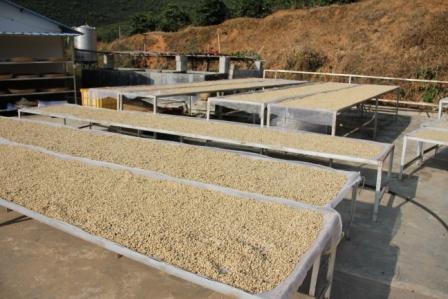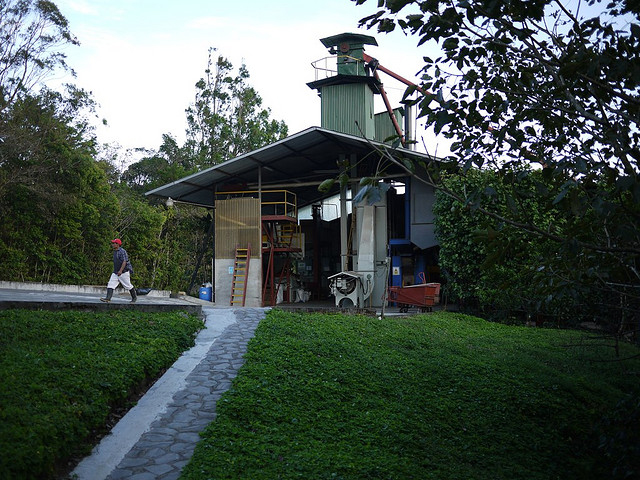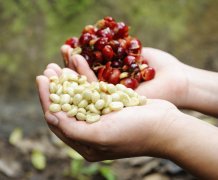Elevated bed Solar treatment of Heirloom Coffee Raw beans in Ethiopia Cedar Mosida Masha Chiso producing area
The coffee flavor of Sidamo is very diverse, because of the different soil composition, regional microclimate and countless native coffee varieties, the coffee produced in each urban area has obvious differences and characteristics. Sidamo producing area (Sidama) is located in the south of Ethiopia. The industry here is dominated by agriculture, and the coffee growing area is located around the East African Great Rift Valley (GreatRiftValley).
Shakisso is located in the southern part of Guji and Oromia, adjacent to Sidama and Gedeo. There are many pits in this area, which were used to mine gold in the early days, so there are many potholes in this coffee growing area. This makes people dangerous when walking between coffee growing areas. Shakiso is a unique producing area of Guji / Cedamory, even in Cedamori, which is a remote area away from most coffee producing areas, and another famous local product is gold. Miners, land, race and other factors also caused unrest in the region in 2006. As a result, the biggest problem facing the region now is that ─ needs manpower to maintain the growing area and harvest coffee. Local small farmers began growing organic coffee in 2001 and work closely with medium-sized coffee producers because they are familiar with how to grow forest coffee in the highlands.
Shakisso/Shakiso 's coffee is quite unique, and the coffee it produces has repeatedly attracted market attention. The original meaning of NinetyPlus's legendary bean (nekisse) is from Shaquiso's Nectarfromshakisso, and its producing area and name are all from Shaquiso Shakisso.
Country: Ethiopia
Producing area: Shaqisuo producing area in Guji region
Altitude: 1800-2000
Treatment: elevated bed solarization
Variety: local native species Heirloom
Producer: local small farmers
Flavor: lemon, mango, blueberry, wine aroma

Important Notice :
前街咖啡 FrontStreet Coffee has moved to new addredd:
FrontStreet Coffee Address: 315,Donghua East Road,GuangZhou
Tel:020 38364473
- Prev

Coffee growing at Incht Manor in Vivette Nan Fruit producing area, Pampa Camara, Bourbon, Guatemala
Guatemala is bordered by Mexico to the north and El Salvador and Honduras to the south. Guatemala produces about 3.5 million bags of coffee each year, and raw coffee beans account for 40 per cent of the country's total agricultural exports. This country, which mainly grows and exports coffee, has fertile soil suitable for coffee trees, suitable climate, abundant water resources and high altitude planting height. Its territory is also
- Next

A brief introduction to Indonesian Coffee excellent full-bodied ripe peaches, pineapples and black sugar
Country: Indonesia: Kintamani Volcano area altitude: 1400 m harvesting season: June to September every year treatment method: sun varieties: USDA, Karka, SMUE 795 processing plant: Ubu processing plant flavor: ripe peach, pineapple, brown sugar in the traditional culture of Bali, coffee is used as a cheap beverage raw material, the flavor of the producing area
Related
- Does Rose Summer choose Blue, Green or Red? Detailed explanation of Rose Summer Coffee plots and Classification in Panamanian Jade Manor
- What is the difference between the origin, producing area, processing plant, cooperative and manor of coffee beans?
- How fine does the espresso powder fit? how to grind the espresso?
- Sca coffee roasting degree color card coffee roasting degree 8 roasting color values what do you mean?
- The practice of lattes: how to make lattes at home
- Introduction to Indonesian Fine Coffee beans-- Java Coffee producing area of Indonesian Arabica Coffee
- How much will the flavor of light and medium roasted rose summer be expressed? What baking level is rose summer suitable for?
- Introduction to the characteristics of washing, sun-drying or wet-planing coffee commonly used in Mantenin, Indonesia
- Price characteristics of Arabica Coffee Bean Starbucks introduction to Manning Coffee Bean Taste producing area Variety Manor
- What is the authentic Yega flavor? What are the flavor characteristics of the really excellent Yejasuffi coffee beans?

